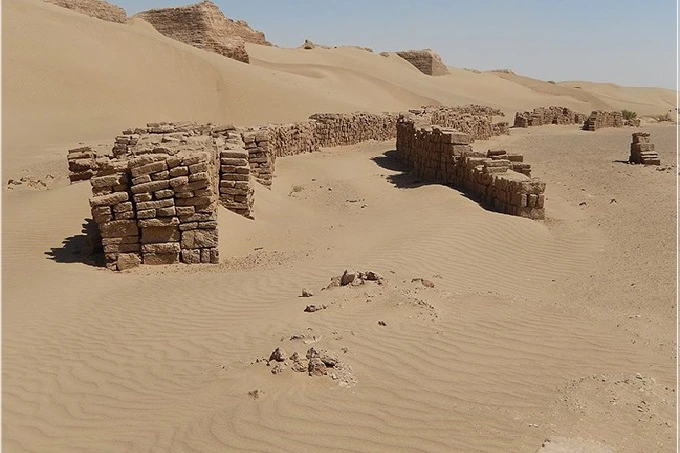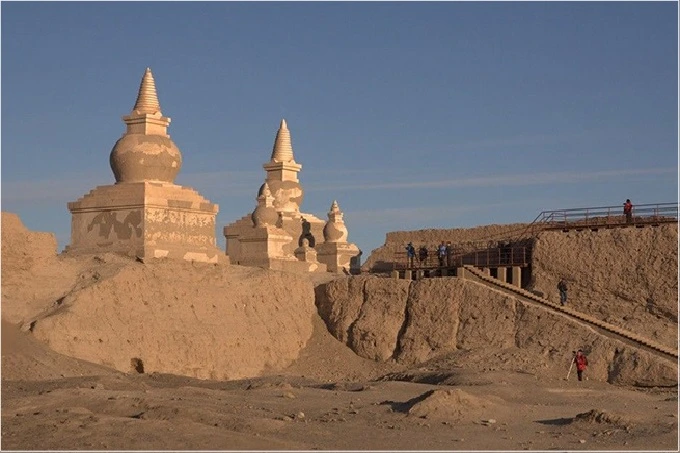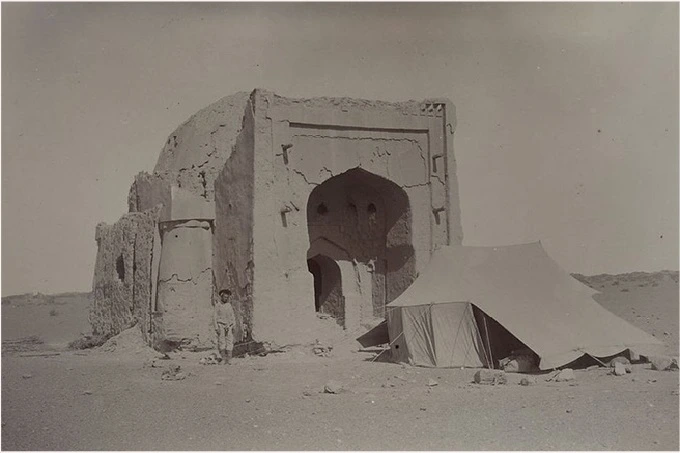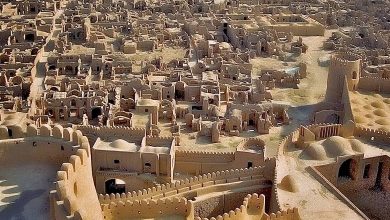What secrets are held by the ruins of the ancient Mongol kingdom of Khara-Khoto, regarded as the gateway to the dead?

Mythical cities serve as a powerful draw for tourists. The mysticism associated with such locations is frequently revealed as an invention of the local tour operators. However, there are a few of them whose actual history is even more shrouded in mystery and enigma than they claim it to be. For example, the ancient Chinese, Mongolian, and Uyghur manuscripts all refer to the city of Khara-Khoto, which is now considered extinct. It was a magnificent city constructed by the gods’ rulers and served as the capital of a prosperous ancient empire. Why were only pitiful ruins and sun-dried bones left of it?
In the middle of a desolate desert

Information about the city that emerged here on these shores of the Warm Sea can be found in ancient manuscripts of various Asian peoples. Over time, the sea finally ran out of water and turned into an arid wasteland. According to the historical records, the city was established by illustrious and prominent figures who served as rulers of the gods. They were members of royal dynasties, wealthy merchants, wise men, practitioners of holistic medicine, and outstanding military leaders. At some point in history, a desolate region was transformed into the capital of a powerful kingdom that stood on the verge of becoming a formidable empire.
This location can be found in the western region of Mongolia, right in the middle of the Gobi Desert. During those times, Khara – Khoto developed into a centre for religious scholarship and the arts and commerce. The only things left of it now are the ruins of the ramparts that were once used to protect the city, a few ruined earthen buildings, and bones scattered everywhere and dried out by the harsh sun.
The Golden Horde spared the lovely city

In Mongolian, Khara-Khoto translates to “black city.” The year 1032 A.D. marks the beginning of its history. Historically, it served as the seat of power for the Western Xia Dynasty (1038-1227). The city quickly developed into a thriving commercial and cultural centre after it was founded. Genghis Khan was successful in his conquest of the town in the year 1226. Khara-Khoto was spared the usual fate of the Golden Horde’s destruction and devastation that is meted out to everything else in its path when it marched through. During the time that the Mongols ruled, it continued to thrive and advance.
Even the well-known explorer Marco Polo mentioned Khara-Khoto in his writings. He said that the city was stunning despite its location in the middle of the desert. He referred to the people who lived there as idolaters and noted that they had developed agriculture and cattle breeding to a high level. These people led prosperous lives. The city was built so that you would be required to stock up on provisions forty days in advance if you were to leave it. This is because there is nothing but an endless desert for many kilometres in every direction with no drop of water or blade of grass.
What caused the city’s downfall?

There is no single, definitive account of what took place. According to a local legend, the previous ruler of Khara-Khoto had an excessive amount of pride. Even though he had an army that could not be defeated and a fortune that could not be counted, this was not enough for him. He had a deep-seated desire to ascend to Emperor of China. His military campaign was a complete and utter failure. The hapless conqueror fled to the impregnable fortress of Khara-Khoto to seek refuge. It was besieged by the soldiers of the Chinese emperor, who laid siege to the city. Because of the dependable manner in which it was defended, it was impossible to take the city. The Chinese were known for their deception. The path of the Ejin River, the only source of water in the city that could support life, was redirected so that it no longer flows into the city walls.
The scorching heat and extreme thirst were killing the local population. The ruler lost his mind and was responsible for the deaths of both of his wives as well as all of their children. He sprinkled their blood on the fortress walls and cursed the place forever. The king hid most of his treasures in Khara-Khoto in various locations. One account suggests that he escaped by sneaking out of the compound using a hole he dug in the wall. The Chinese conquered the city after breaking through the defences and slaughtered anyone still alive at the time, including children and infants. Even the horses, cattle, and other animals that belonged to the city were killed. Following that, the magnificent capital of the powerful kingdom of Khara-Khoto was deserted and allowed to fall into disrepair. Unfortunately, the treasures were never located.
Newly opened city

A Mongolian and Sichuan expedition led by the Russian explorer Pyotr Kuzmich Kozlov was responsible for rediscovering this location in the early 20th century. Researchers discovered a massive library that contained over two thousand different books, scrolls, and manuscripts during the archaeological digs. In addition, various Buddhist statues, woodcuts, household items, and works of art were discovered. Many of these books and woodcuts were the foundation for later studies of the Tangut language, which were recorded using the Tangut script.
It is correct that the expedition was not successful in discovering the rumoured untold treasures. The locals have a story that says that very few brave men who dared to dig in the cursed city occasionally came across figurines made of gold and silver and ingots of each metal. There is also a story about an older woman who set out with her sons to find horses that had fled during the storm.
They were forced to seek shelter within the fortified walls of Khara-Khoto as the storm raged with ferocity. They had a restless night there as a result. The family decided to go on an adventure together through the deserted city of the dead in the morning. There was nothing around other than some bones that had dried out. Suddenly, something that glistened in the sunlight caught the older woman’s attention, and she bent down to pick up some beads made of shimmering silver. During the same period, a prosperous Chinese merchant caravan travelled through the area. When the merchants saw the necklace with the enormous pearls of such high quality, they decided to buy it from the woman and her sons by exchanging the entire contents of their caravan for the necklace.
Unfortunately, nothing is spared from the ravages of brutal time and the sands of the desert. Today, nothing but ruins are all that is left of this once-great city. The ancient and mighty city of Khara-Khoto has not yet divulged any of its wondrous treasures or mysteriously guarded secrets to anyone.




